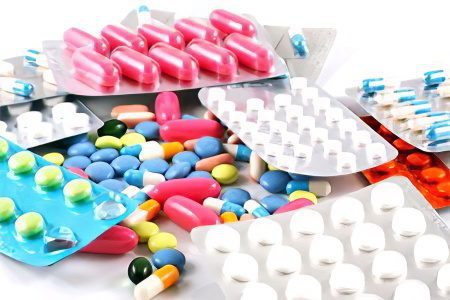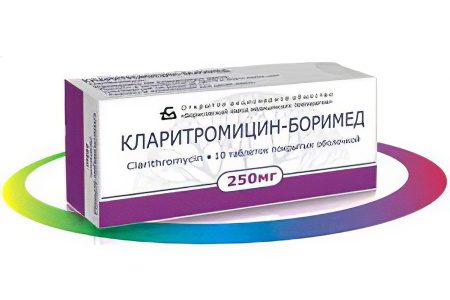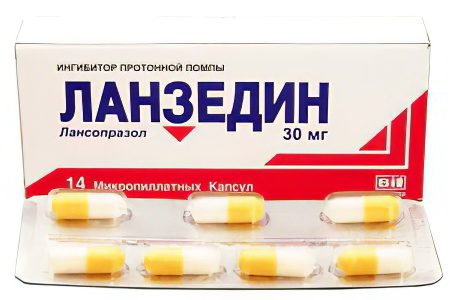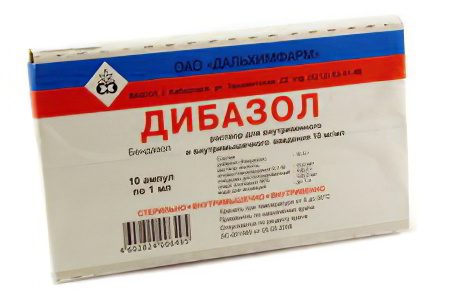Contents

The mechanism of occurrence and development of gastric ulcers is not yet fully understood. On the one hand, it has been proven that the culprit of the infection is a special pathogenic microorganism – Helicobacter pylori. And on the other hand, strong immunity, a healthy lifestyle, proper diet and a stable neuropsychological status of a person would not allow Helicobacter pylori to multiply and provoke peptic ulcer. Therefore, the approach to the treatment of this disease should be comprehensive.
Competent therapy for stomach ulcers includes:
Taking several types of medicines according to a special scheme;
Compliance with the recommended diet and food intake;
Correction of the psycho-emotional sphere and the rejection of bad habits;
Spa treatment;
Surgical intervention (if required).
Drug treatment of stomach ulcers is performed using three main groups of drugs:
antibiotics;
Histamine receptor blockers;
Proton pump inhibitors (PPIs).
Auxiliary therapy is carried out using several more types of drugs:
Holinoblocker;
Antacids;
Reparants;
Anabolics;
Gastroprotectors;
Antispasmodics;
Analgesics;
Ganglioblockers;
Antiemetics;
Vitamins;
Immunostimulants.
The scheme of treatment of stomach ulcers
The most effective is a two-stage scheme for the treatment of peptic ulcer:
Stage I lasts 7 days. During this period, the patient is prescribed a combination of two antibiotics, usually metronidazole and clarithromycin, as well as a proton pump inhibitor, such as lansoprazole. Drugs can be replaced by analogues at the discretion of the attending physician, the dosage is also set individually. The goal of the first stage of treatment is the complete destruction of Helicobacter pylori, and in 95% of cases it is possible to cope with the task;
II stage takes 14 days and is required only if Helicobacter pylori is still found in the stomach after the first stage. Against bacteria, a tandem of antibiotics metronidazole + tetracycline is used, and therapy is supplemented with one of the bismuth preparations, as well as PPIs (omeprazole, rabeprazole) and a histamine receptor blocker (ranitidine, famotidine).
Treatment must be supported by anti-inflammatory, analgesic, antispasmodic, wound healing, antiemetic and other drugs that relieve the unpleasant symptoms of stomach ulcers and speed up the healing process. Folk remedies (herbal decoctions and infusions), vitamins, natural extracts, such as aloe vera, are very useful. However, for any medication, you should consult your gastroenterologist.
Peptic ulcer disease is very individual, characterized by different indicators of acidity and is often accompanied by complications from other organs. In addition, antibiotic therapy almost always gives side effects in the form of digestive disorders and pain. Treatment of acute stomach ulcers is recommended to be carried out in a hospital under the constant supervision of qualified specialists.
Complete list of medicines for stomach ulcers

Antibiotics:
Clarithromycin. Semi-synthetic macrolide antibiotic. A direct descendant of erythromycin, it is one hundred times more resistant to the destructive effect of hydrochloric acid, more complete and faster absorption, good distribution in tissues and a long half-life. Due to this, clarithromycin outperforms erythromycin and is recommended as the main antibiotic for the treatment of stomach ulcers;
Amoxicillin. Semi-synthetic antibiotic of the penicillin group. Unlike penicillin, it is resistant to the corrosive action of gastric juice, is absorbed almost completely (by 93%), spreads faster through tissues and fluids, covers the body more fully and stays in it longer, which makes it possible to prescribe amoxicillin for peptic ulcer twice, and not four times a day. day;
Metrics. Antimicrobial and antiprotozoal drug with a very broad spectrum of action. One of the oldest, most reliable and effective antibiotics, belongs to the group of vital medicines. Metronidazole is a synthetic analogue of azomycin, a natural antibiotic produced by bacteria of the genus Streptomyces. Harmful microorganisms and protozoa interact with metronidazole, as a result of which its 5-nitro group is restored. And it, in turn, destroys the DNA of parasites and microbes;
Tetracycline. An antibiotic from the tetracycline group. It has a bacteriostatic effect, that is, it disrupts the interaction between ribosomes and transport RNA, as a result of which protein synthesis by bacterial cells is suspended, and they die. Tetracycline is active against many gram-positive and gram-negative microorganisms, as well as against most enterobacteria, including Helicobacter pylori.
Histamine receptor blockers:
Ranitidine. The drug is the second generation of histamine blockers. Reduces the activity of pepsin (a digestive enzyme responsible for the breakdown of proteins). Normalizes the pH level in the stomach, inhibits the synthesis of hydrochloric acid. Depending on the dosage, it protects the mucous membrane from the damaging effects of excess acidity for 12-24 hours;
Nizatidine. The second generation of histamine III-receptor blockers. It suppresses both its own synthesis of hydrochloric acid by the walls of the stomach, and excess synthesis provoked by acetylcholine, histamine and gastrin – enzymes and mediators. Significantly reduces the hyperactivity of pepsin and keeps the pH level in a state of physiological norm for 12 hours after ingestion;
Roxatidine. The second generation of histamine H2 receptor blockers. It inhibits the activity of pepsin, normalizes the acid-base balance of the stomach, reduces the secretion of hydrochloric acid caused by food, gastrin, histamine, acetylcholine, and also suppresses the basal synthesis of gastric juice. It is rapidly absorbed and acts within an hour after ingestion. The effect lasts from 12 hours to one day, depending on the dosage;
Famotidine. It is also a drug of the second generation of histamine H2 receptor blockers. It inhibits both basal and externally provoked secretion of hydrochloric acid by the cells of the gastric mucosa. Thus, it well protects the patient’s body from the undesirable effects of pepsin, histamine, gastrin and acetylcholine;
Cimetidine. The drug is the first generation of histamine III-receptor blockers, but still has not lost its relevance. It also regulates the pH level in the stomach well, inhibits the synthesis of hydrochloric acid and inhibits the activity of the pepsin enzyme. It costs less than the above modern analogues, but is considered less effective due to the short period of continuous action (6-8 hours).
Proton pump inhibitors (PPIs):

Lansoprazole. Inhibitor of H + -K + -ATPase – an enzyme responsible for accelerating the exchange of hydrogen ions. Regardless of the reasons for the hypersecretion of hydrochloric acid, lansoprazole inhibits its production at the final stage, that is, immediately before being released into the stomach cavity;
Omeprazole. It also inhibits the action of the proton pump by inhibiting the activity of the enzyme H + -K + -ATPase. Hydrogen ions penetrate worse between the membranes of the cells of the gastric mucosa, and this interferes with the production of gastric juice. And it doesn’t matter what exactly provokes the hypersecretion of hydrochloric acid – the intake of food or the action of enzymes and mediators;
Rabeprazole. Better known under the brand name “pariet”. This drug not only inhibits the secretion of hydrochloric acid, blocking the action of H + -K + -ATPase, but also has a detrimental effect on Helicobacter pylori, the culprit of stomach ulcers. Rabeprazole begins to act one hour after ingestion and protects the mucous membrane for up to two days in a row;
Esomeprazole. The drug, which is a dextrorotatory isomer of omeprazole, and has a similar effect. It also inhibits the synthesis of hydrochloric acid at the last stage due to the deterioration of hydrogen exchange between the membranes of the cells of the gastric mucosa. Being a weak base, esomeprazole is activated in the acidic environment of the parietal tubules and inhibits the action of the proton pump.
Gastroprotectors, anabolics and reparants:
Sucralfate. The drug has antiulcer, adsorbing, enveloping, antacid and protective action. It practically does not affect a healthy mucous membrane, and under conditions of increased acidity of a diseased stomach, it breaks down into sucrose sulfate and aluminum, which allows you to bind mucus proteins and form a strong protective film in places of ulceration. After taking sucralfate, the stomach walls are protected for 6 hours from excess hydrochloric acid, pepsin, waste products of harmful bacteria and bile thrown from the pancreas;
Solcoseryl. Powerful reparant and cytoprotector. Restores the gastric mucosa, promotes healing of ulcers, improves cell metabolism. It is produced from the blood of dairy calves and is a hemodialysate with a molecular weight of 5000 D. The potential of solcoseryl is not yet fully understood, however, the use of this drug at the stage of healing of a stomach ulcer, that is, after the active antimicrobial phase, gives exceptionally good results;
Enprostil and misoprostol – synthetic analogues of prostaglandin E2 and E1, respectively. These substances are similar to hormones and are produced in almost all tissues of the human body. Prostaglandins are mediators of allergy and inflammation, they regulate blood pressure, normalize muscle tone, reduce gastric acidity and inhibit the secretion of gastric juice;
Biogastron. The active substance of this drug is carbenoxolone, a synthetic analogue of glycyrrhizic acid. Scientists extract this valuable material from the licorice root. Biogastron has a pronounced anti-inflammatory effect and is used to treat ulcers on the mucous membrane of the mouth, esophagus and stomach. The drug is well known abroad, and is rarely used in Russia, although it has great potential;
Actovegin. Effective reparant and antihypoxant. Like solcoseryl, it is made from blood and is a hemodialysate with a molecular weight of 5000 daltons. Ultrafiltration makes actovegin able to penetrate cell membranes, improve the uptake of oxygen and glucose and ensure rapid regeneration of damaged and inflamed tissues;
Bismuth tripotassium dicitrate. The most optimal preparation of bismuth for the treatment of stomach ulcers. In conditions of high acidity, it quickly forms a protective film that covers the damaged areas of the mucous membrane. In addition, tripotassium bismuth dicitrate enhances the production of prostaglandin E2 and inhibits the activity of helicobacteria that cause peptic ulcer;
Amigluracil. An effective anabolic and reparant. It accelerates the synthesis of proteins and amino acids, promotes the healing of ulcers and wound surfaces, improves immunity and helps the body cope with infections on its own by enriching the blood with immune cells. It is successfully used at the final stage of recovery after gastric and duodenal ulcers;
Methyluracil. Also a popular immunostimulant, anabolic and reparant. Stimulates the synthesis of leukocytes, accelerates nucleic metabolism, promotes rapid regeneration and epithelialization of damaged tissues and mucous membranes. The anti-inflammatory effect of methyluracil is due to its inhibitory effect on proteolytic enzymes. At the final stage of the treatment of stomach ulcers, the drug helps scarring and cell renewal;
Sodium oxyferriscarbon. Anti-inflammatory, analgesic and wound healing drug based on iron with the addition of sodium salts and alloxanic acid. It is used to treat peptic ulcers of the esophagus, small and duodenal ulcers, as well as stomach ulcers;
Romazulan. Phytopreparation based on chamomile, which has a complex effect: relieves spasms, anesthetizes, kills microbes and stimulates the healing of wounds and ulcers. Romazulan solution is used both externally, for skin lesions, diseases of the oral cavity and urogenital area, and inside, diluted with water, for the treatment of peptic ulcer and gastritis;
Histidine hydrochloride. The drug is an amino acid, which, when it enters the body, undergoes a decarboxylation reaction, and as a result, histamine is formed – a mediator that has a multilateral effect on the body. Histamine stimulates the production of epinephrine, excites smooth muscles, increases the permeability of the walls of blood vessels, increases the heart rate and causes the stomach to produce more gastric juice, and in some types of stomach ulcers this is necessary.
Cholinergic:

Gastrocepin. The active substance – pirenzepine – belongs to the group of M1-cholinergic receptor blockers, but unlike atropine, the most famous representative of this group, it does not inhibit the activity of cholinergic receptors of the heart, eyes, salivary glands and other organs, but only affects the gastric mucosa, causing produce less hydrochloric acid and pepsinogen;
Buscopan. The drug has a blocking effect on the M-cholinergic receptors of the stomach, kidneys, gall bladder and bladder, and also works as an antispasmodic. Buscopan relieves spasms of smooth muscles and somewhat reduces the level of secretion of gastric juice, which makes it possible to symptomatically alleviate the condition of patients with gastric ulcer;
Platifillin. It blocks M-cholinergic receptors of internal organs and eyes approximately 8 times weaker than atropine, and also blocks H-cholinergic receptors to some extent. Wins over atropine due to the fact that it causes tachycardia less often. Platifillin has an antispasmodic effect on the walls of the stomach and intestines, dilates blood vessels and lowers blood pressure;
Metacin. It also refers to milder than atropine blockers of M-cholinergic receptors. It well reduces the tone of the gallbladder and bladder, relieves spasms and eliminates pain in the stomach, suppresses the secretion of gastric juice, sweat, saliva, and normalizes blood pressure. Less likely than atropine, it causes unwanted heart rate jumps, pupillary dilation and increased intraocular pressure;
Etpenal. Blocker of cholinergic receptors of both types – “H” and “M”. An effective local anesthetic, it has a good effect on both the central and peripheral nervous systems. Etpenal is used for the symptomatic treatment of stomach ulcers, as well as bronchial asthma and Parkinson’s disease, as it relieves spasms and reduces tremors.
Antacids:
Almagel. Adsorbent, enveloping and analgesic medicine, which is well known to all ulcers. Almagel protects the gastric mucosa from the damaging effects of excess hydrochloric acid and pepsin, absorbs toxic waste products of bacteria and interferes with the absorption of phosphates. Thus, it does not cure a stomach ulcer, but helps relieve its painful symptoms and reduce the harm caused by the inflammatory process to the patient’s body as a whole;
Maalox. Antacid preparation based on magnesium and aluminum hydroxides. Maalox reacts with hydrochloric acid and neutralizes its excess, and there is no re-compensating secretion. This drug normalizes the pH level and protects the gastric mucosa, but, like Almagel, does not eliminate the very cause of peptic ulcer;
Gastal. A more advanced, combined antacid, which, in addition to magnesium and aluminum hydroxides, contains magnesium carbonate. Immediately after ingestion, it allows artificially maintaining a physiologically normal pH level of 3,5 in the stomach for two hours, due to the neutralization of excess hydrochloric acid. Stomach ulcer does not heal, but saves from pain and heartburn;
Phosphalugel. Antacid preparation based on aluminum phosphate. It has a more pronounced and lasting effect than the above drugs of the same type. Phosphalugel not only neutralizes excess hydrochloric acid, but also inhibits the activity of the pepsin enzyme. It reliably envelops the walls of the stomach, creating a protective barrier for irritants, but it does not have a detrimental effect on Helicobacter pylori, therefore it can only be used for symptomatic relief of the condition of patients with peptic ulcer;
sodium bicarbonate. Baking soda is the easiest and most affordable antacid. A solution of soda helps relieve heartburn and stomach pain with gastritis and ulcers, and is also used to combat acidosis caused by general intoxication of the body or diabetes.
Antiemetics:
Motilium. The active ingredient is domperidone, the opposite of dopamine. The drug blocks the activity of dopamine receptors and increases the tone of the lower esophageal sphincter, accelerates the movement of food through the digestive tract, stimulates the motility of the stomach and intestines. Motilium does not have any effect on the secretion of gastric juice, it simply relieves attacks of nausea and vomiting in gastritis and stomach ulcers;
Cerucal. A drug that prevents the transmission of nerve impulses through the visceral channels from dopamine receptors to the vomiting center in the brain, and also stimulates intestinal motility, increases the tone of the lower esophageal sphincter and promotes the energetic movement of food through the digestive tract. Thus, even if there are objective reasons for vomiting, it can be avoided;
Metoclopramide. The drug blocks dopamine and serotonin receptors, due to which it is possible not only to stop vomiting attacks, but also to stop hiccups and avoid diarrhea, which can be a side effect of moving food from the stomach to the rectum too quickly. Metoclopramide does not affect the secretory functions in any way, but there is still an insufficiently substantiated medical opinion that this drug promotes the healing of stomach ulcers.
Antispasmodics:

Galidor. The active substance – bentsiklar – myotropic antispasmodic, blocker of calcium channels, serotonin receptors and sympathetic nerve nodes. Perfectly relieves spasms of blood vessels and smooth muscles, increases the elasticity of erythrocytes, lowers blood pressure, but may slightly increase heart rate. Halidor in large doses is considered as a tranquilizer. With stomach ulcers, it is indicated as an anesthetic drug;
Dibazol. Myotropic antispasmodic, benzimidazole derivative. It has a smoothing effect on the muscles of internal organs, blood vessels and capillaries, normalizes blood pressure, dilates the vessels of the brain and accelerates the transmission of nerve impulses between synapses. It perfectly relieves headaches and muscle pains, but it does not last long, therefore, in the treatment of stomach ulcers, more advanced and modern antispasmodics are usually prescribed;
Papaverine. Calcium channel blocker, mild myotropic antispasmodic. It dilates blood vessels and capillaries, reduces blood pressure and smooth muscle tone, relieves pain in the internal organs caused by muscle spasm, but does not last long and does not affect the parasympathetic nervous system sufficiently to save from severe pain in stomach ulcers. Therefore, at present, papaverine is not considered as a reliable pain reliever;
But-Shpa. The most popular antispasmodic. The active substance, drotaverine, is very similar in structure and pharmacological action to papaverine, but acts more pronouncedly and for a longer time. No-Shpa prevents the entry of calcium molecules into smooth muscle cells, thereby relieving pain in migraines, periodic female ailments and peptic ulcers. The range of application of No-Shpa is very wide, and it is this myotropic antispasmodic that is prescribed in cases where anticholinergics are contraindicated for a patient for any reason – drugs that relieve pain better, but are not suitable for everyone.
Ganglioblockers:
Benzohexonium. It inhibits the conduction of impulses between the ganglia (large nerve nodes) of the sympathetic and parasympathetic nervous systems, and also inhibits the activity of all endocrine glands, including the gastric mucosa, adrenal cortex and pancreas. Benzohexonium is used for the symptomatic treatment of stomach ulcers, cholecystitis, bronchial asthma, cholelithiasis and many other diseases;
Dimecoline. A more perfect analogue of benzohexonium. It has a pronounced antispasmodic effect on blood vessels, muscles and internal organs by blocking nerve impulses between ganglia, therefore it is successfully used to relieve acute attacks of pain in peptic ulcer, pancreatitis, hepatitis, cirrhosis, cholecystitis, cholelithiasis. Sometimes dimecoline is also prescribed to patients with persistent arterial hypertension;
Camphonium. Quaternary ammonium compound. Well reduces pressure, reduces the tone of the coronary arteries and peripheral blood vessels, smoothes the muscles of the internal organs. Camphonium, like all ganglion blockers, is used for symptomatic relief of the condition of patients with gastric ulcer, in addition, the drug is sometimes prescribed for hypertensive patients and patients with obliterating endarteritis.
Quateron. Monoquaternary ammonium compound. It inhibits the conduction of nerve impulses between the ganglia of the parasympathetic nervous system better than the sympathetic one, therefore it is used specifically to relieve pain in ulcers and patients with specific colitis. Kvateron expands the coronary arteries slightly, so it is rarely prescribed as an antihypertensive drug;
Temekhin. It interferes with the transmission of nerve impulses from preganglionic to postganglionic vegetative fibers, and due to this, it effectively relieves muscle spasms and dilates blood vessels. Temekhin has a beneficial effect on arterioles, therefore it is relevant for persistent arterial hypertension and angina pectoris, and for patients with stomach ulcers it is prescribed to reduce hypersecretion of gastric juice and reduce pain caused by spastic phenomena.









